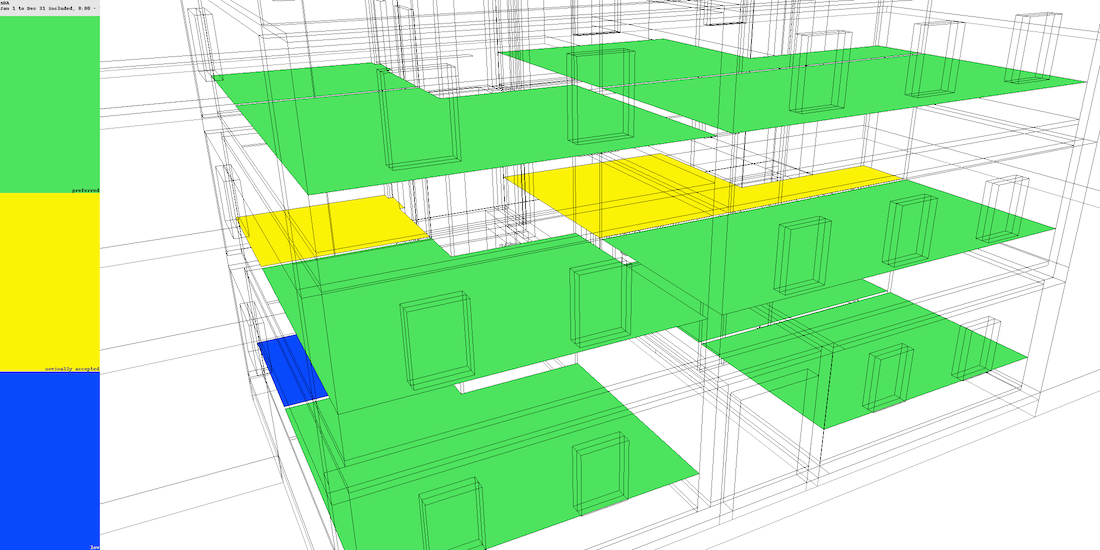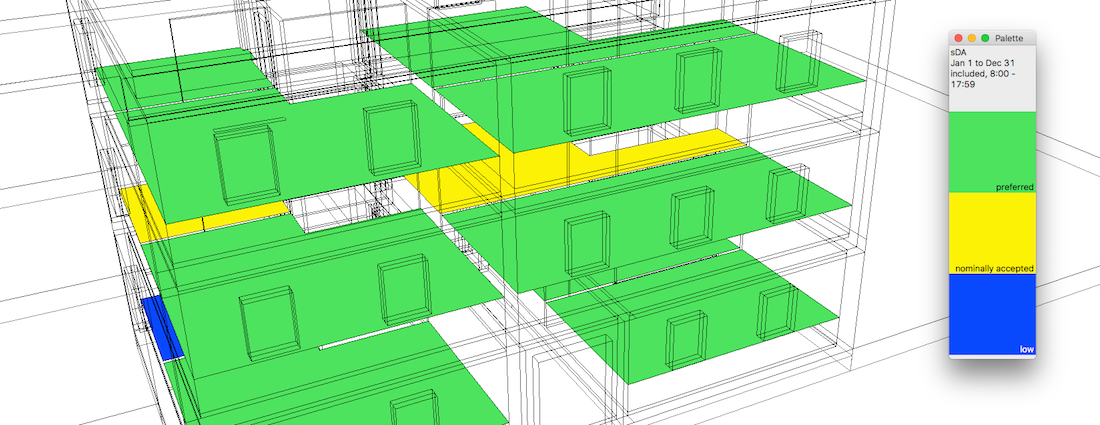
Spatial Daylight Autonomy (sDA) assesses whether a space receives sufficient daylight on a work plane during standard operating hours on an annual basis. The target is 300 lux for 50% of the occupied period.
This extension also calculates the associated indicator ASE (Annual Sunlight Exposure). ASE identifies surfaces receiving too much direct sunlight that may cause visual discomfort (glare) or additional cooling costs. ASE measures the percentage of the work plane exceeding the threshold of 1000 lux more than 250 occupied hours per year.
The sDA and ASE indicators are part of the LEED rating system. They are defined in the IES LM-83-12 standard:
Illuminating Engineering Society, Lighting Measurement 83: Approved Method: IES Spatial Daylight Autonomy (sDA) and Annual Sunlight Exposure (ASE)
This extension is designed to follow the recommendations of the standard:

The extension offers two modes for sDA:
For detailed analyzes, in both modes, you can display either the performance ("preferred", "nominally accepted", "low"), or the zone reaching the threshold "sDA300,50%", or the duration above the illuminance threshold.
By default, the calculations of sDA and ASE are performed simultaneously in order to garanty their consistency. The report presents the two indicators for each surface.
Open the SketchUp model. Follow recommendations to prepare your model for DL-Light calculations.
Open sDA / ASE dialog from toolbar
![]() or menu option
Extensions -> De Luminae -> sDA / ASE (spatial DA) ->
Activate extension
and enter the parameters of the calculation.
or menu option
Extensions -> De Luminae -> sDA / ASE (spatial DA) ->
Activate extension
and enter the parameters of the calculation.
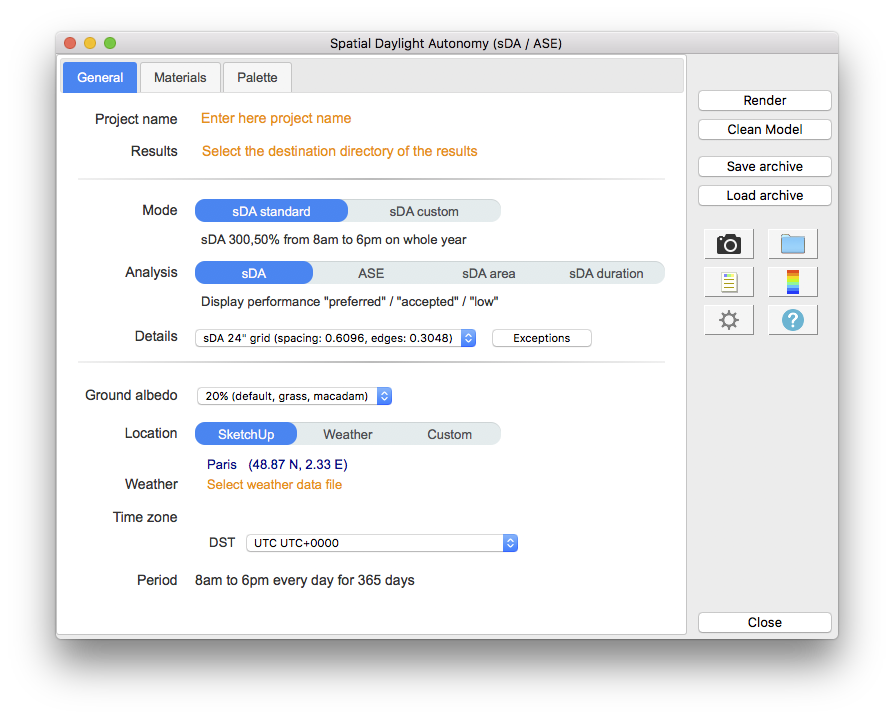
Fields description:
Project name - The project name is used during export and for output filename generation. The SketchUp model name is used by default.
Results - The directory where
model will be exported for calculation.
When calculation is started the model geometry and the resulting
files will be saved in
sda_output
subdirectory.
For SketchUp projects stored on network disk (Windows), see
Work on a copy of the model.
Mode - Calculation mode selection:


Analysis - Selection of the analysis to be performed, settings for the palette, the false color textures and the report:
Details - The default selection is the grid required by LM-83:
DL-Light allows to choose:
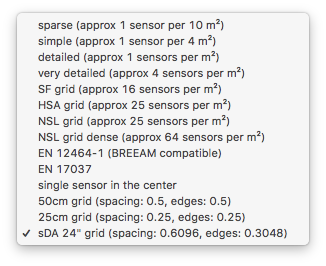
See sensors selection for more information on the choices of proposed grids.
Ground albedo - Reflection factor of the ground. The value can be selected from the drop-down list or a custom value can be defined:
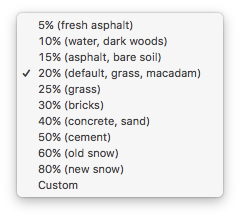
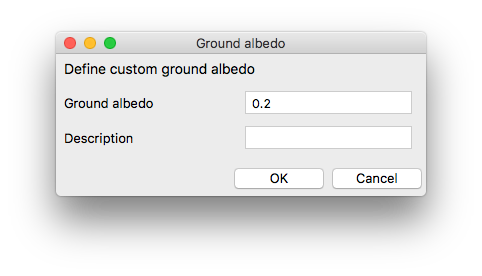
Location - Building location coordinates. Location can be based on SketchUp model location, current Weather file location or be Custom. Below is dialog for Custom location definition.
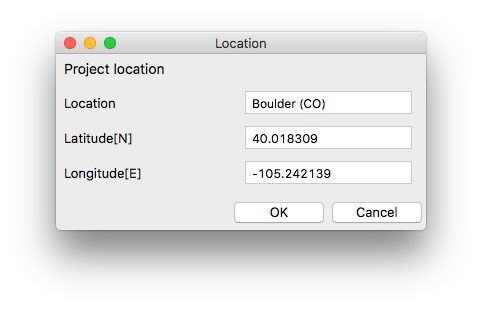
Weather - Select annual weather file for the building location in Energy Plus weather file format. The weather file can be selected in the list provided by DL-Light or downloaded from Internet. See page Weather data.
Time zone - Display of the time zone used for the calculations.
The time zone is defined from the selected climate data file.
Nota: when a model is located in SketchUp, SketchUp proposes a
time zone based on the longitude of the place. This value is
sometimes wrong, especially for European or Asian countries.
Daylight saving time: LM-83 specifies that the 8am/6pm schedule must take summer time into account (it is possible to change this option in the preferences). The time zone and the location indicated by the weather file allow automatic deduction of the rules for daylight saving time. If multiple DST time zones are possible (or synonyms for the same rule), you can select in the list the rule to apply.
Period - Period of analysis. The sDA indicator is normally calculated for 8am/6pm over the year. If the custom sDA mode is selected it is possible to modify the start and end dates and the planned hours.
Define materials characheristics.
Since calculation is done with validated Radiance tools it is necessary to 'attach' physically based material to each layer in SketchUp. Note that materials should be defined with their light reflectance and transmittance.
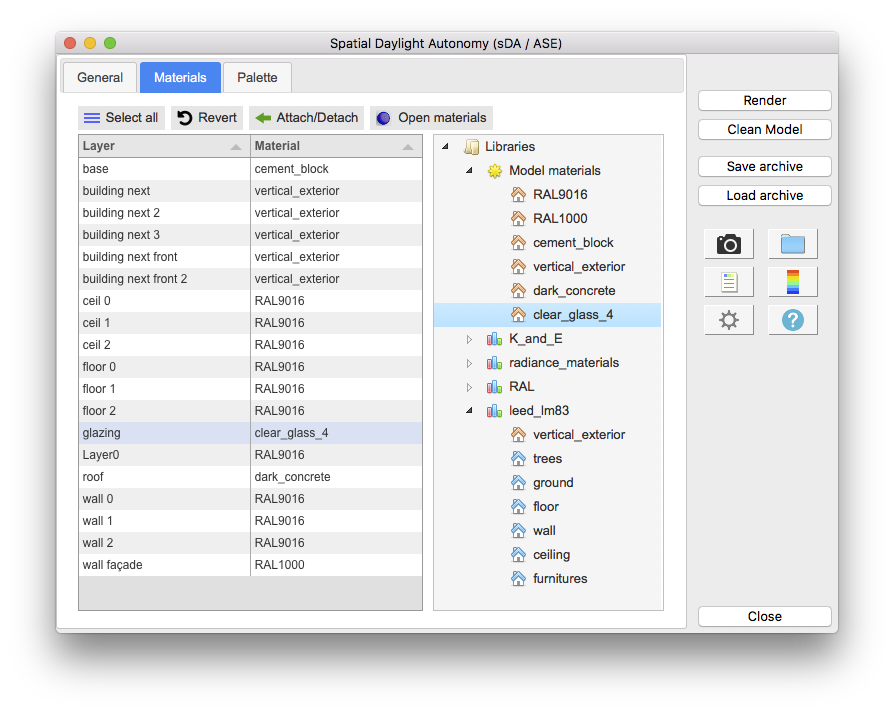
Materials panel consists of two main parts:
To attach a material, select in the table layer(s) and either
double-click on the chosen material in the tree or select the material
in the tree and press
Attach/Detach button.
To detach from the layer(s), select it and click
Attach/Detach
button.
To revert all layers to previous state press
Revert button.
The palette of false colors uses the defined thresholds. It is possible to change the various colors. The palettes for the analyzes sDA, ASE, sDA area and sDA duration:
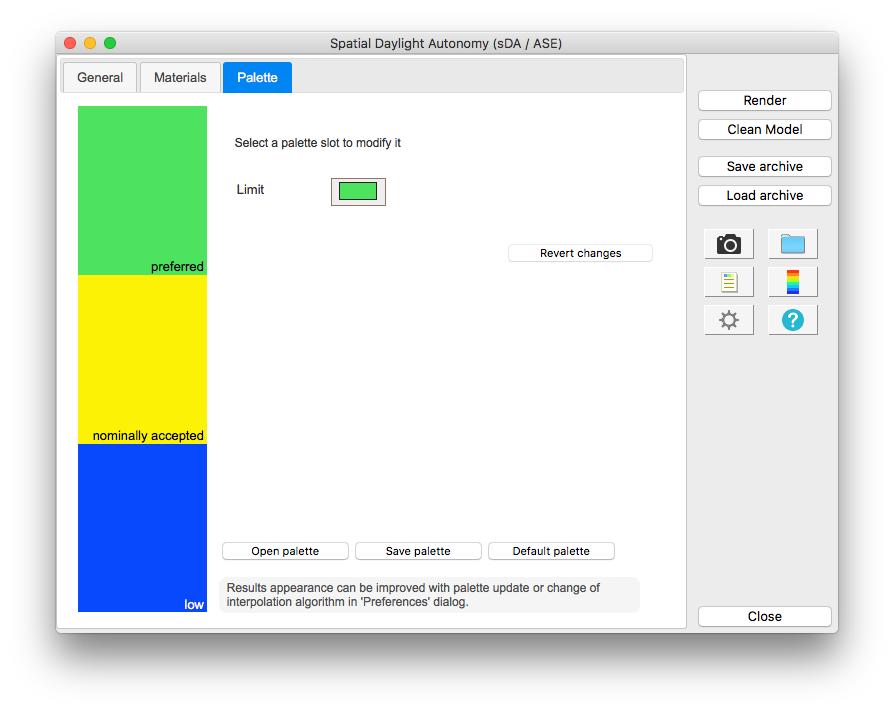
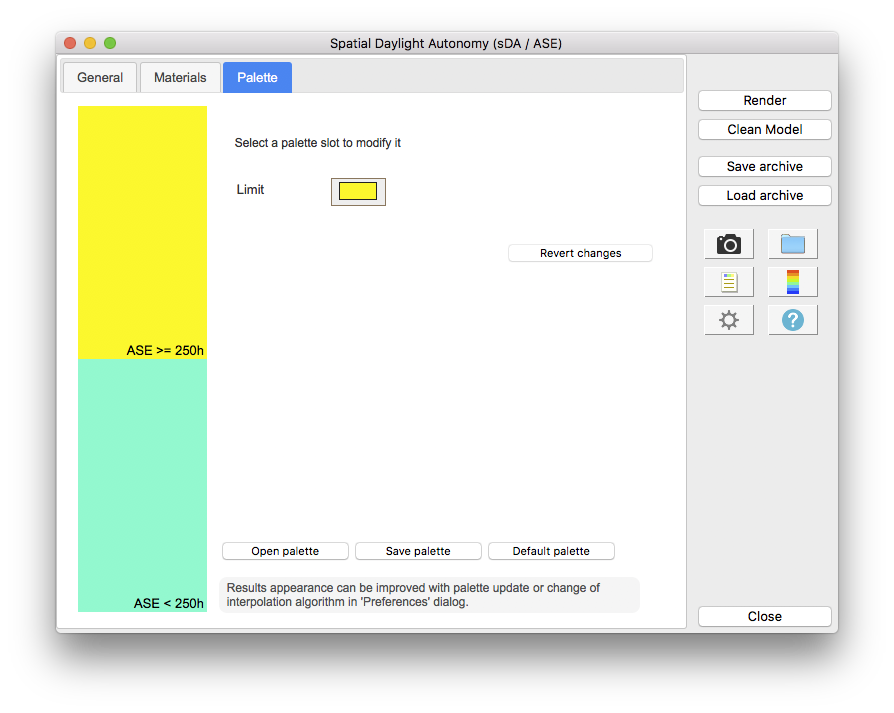
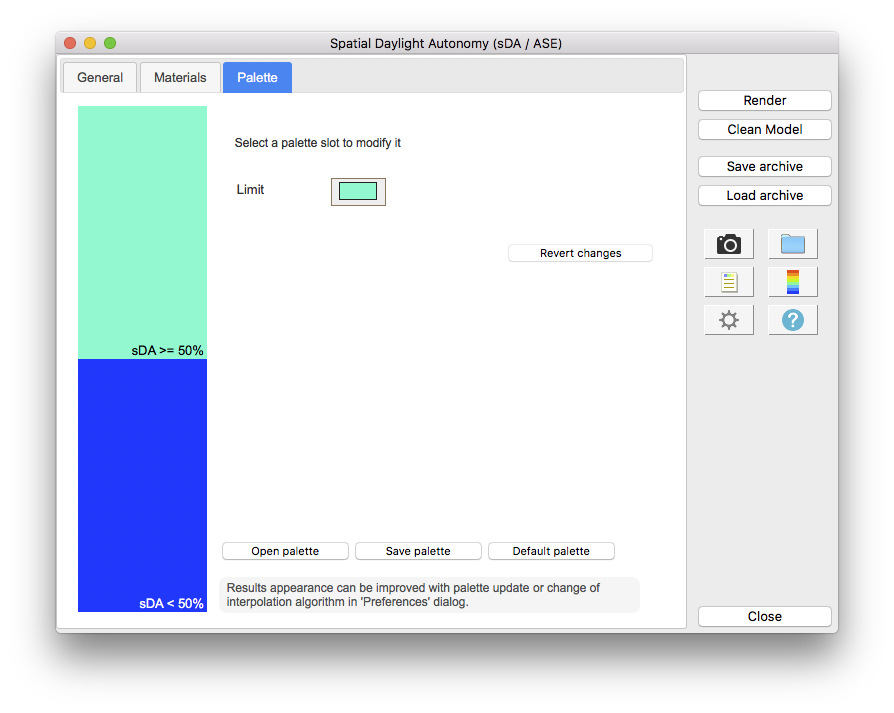
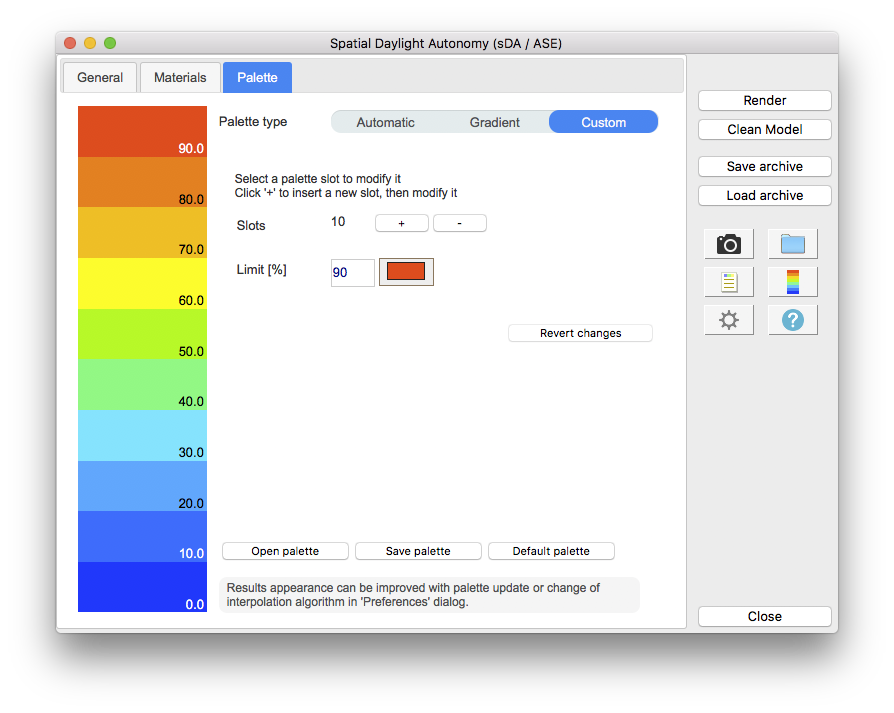
After all data are entered, select one or more surfaces and press
Render
or
 button.
button.
As glazings are used for this calculation, it may be practical to use
the DL-Light select by layer dialog
 to select the areas to be calculated.
to select the areas to be calculated.
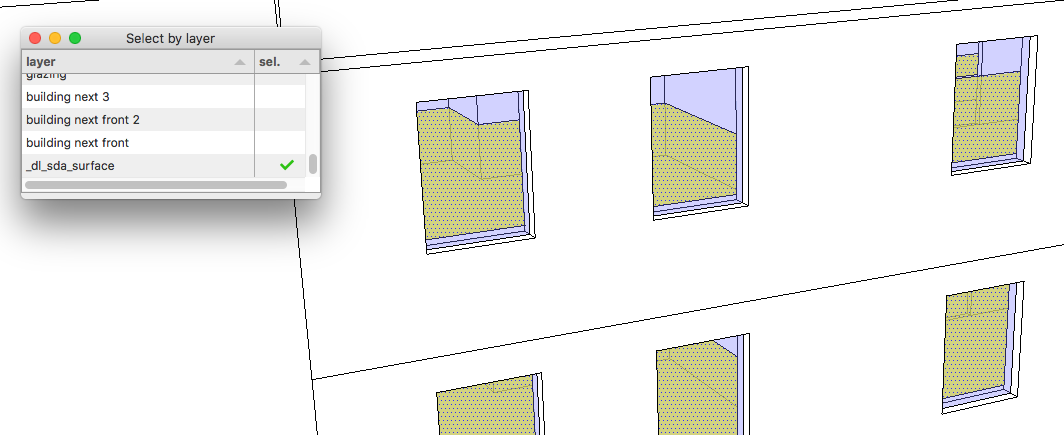
Calculation time depends on the number of selected surfaces, the level of sensors details and model complexity.
The "Daylight Autonomy" type of calculation (often referred to as "3-phases" calculation) is the most time consuming. DL-Light uses a caching system to switch between sDA and ASE analyzes without triggering a full calculation.
By default, the sDA calculation also performs the ASE calculation. It is possible to modify this option in the preferences. The sDA calculation is then slightly faster and the ASE calculation is only performed when its display is requested:

When results are imported, calculated surfaces will have appropriate false colors and Palette is opened.
Rendering of the sDA analysis:
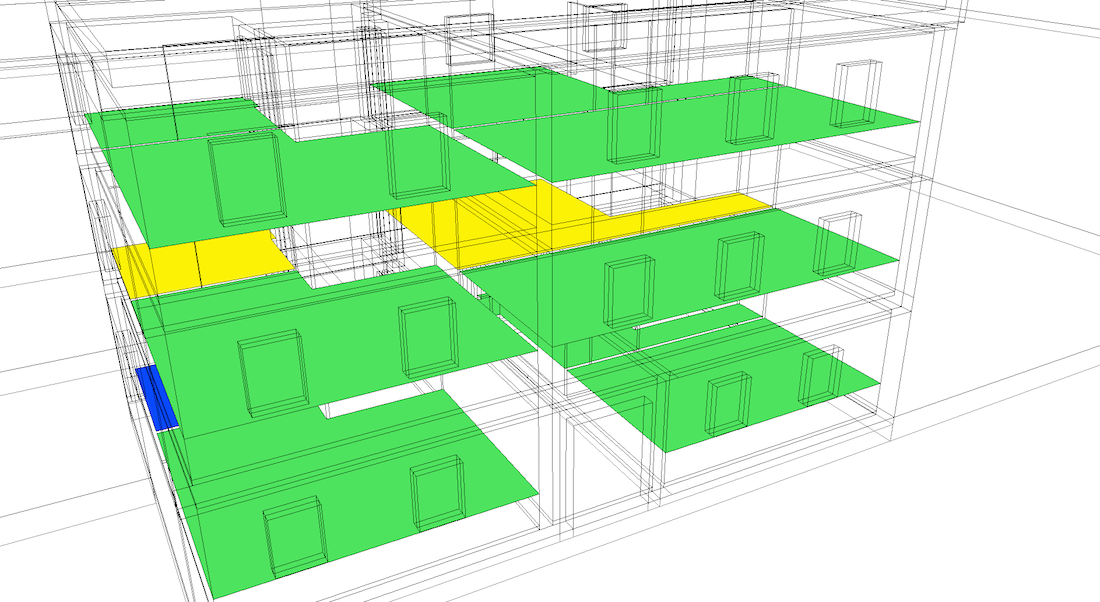
Rendering of the ASE analysis:
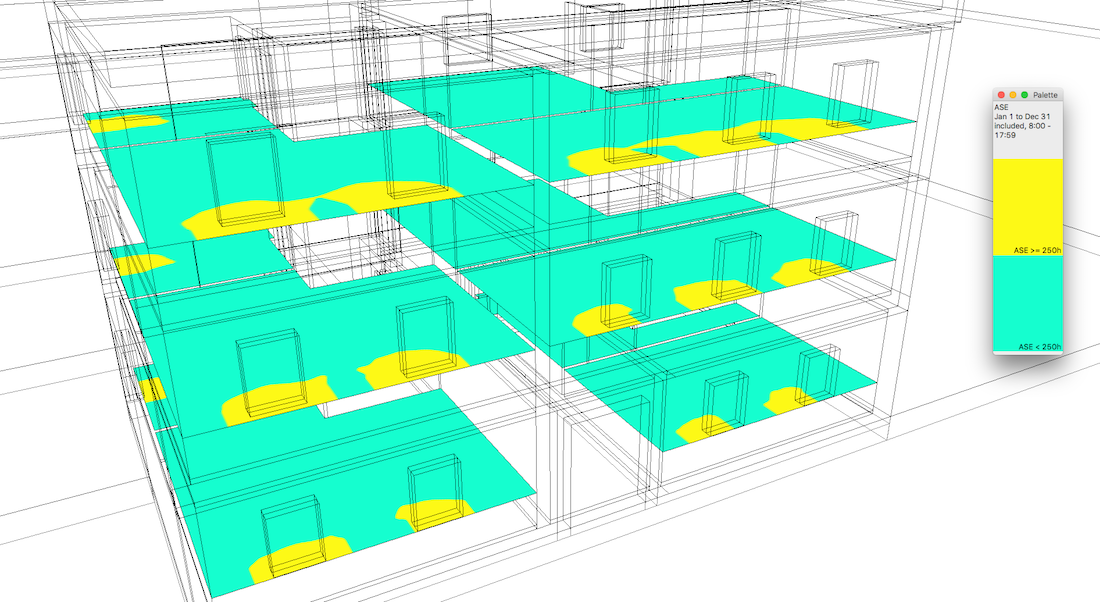
Rendering for area and duration sDA analyzes:

Results analysis.
The Report dialog
 displays the distribution of results for current palette, and
calculation parameters.
displays the distribution of results for current palette, and
calculation parameters.
Presentation of the report for sDA / ASE analysis:
Note: the “LEED sDA points” column shows the LEED classification points for each surface for the sDA criterion alone, without taking into account the corrections to be made with respect to the ASE criterion.
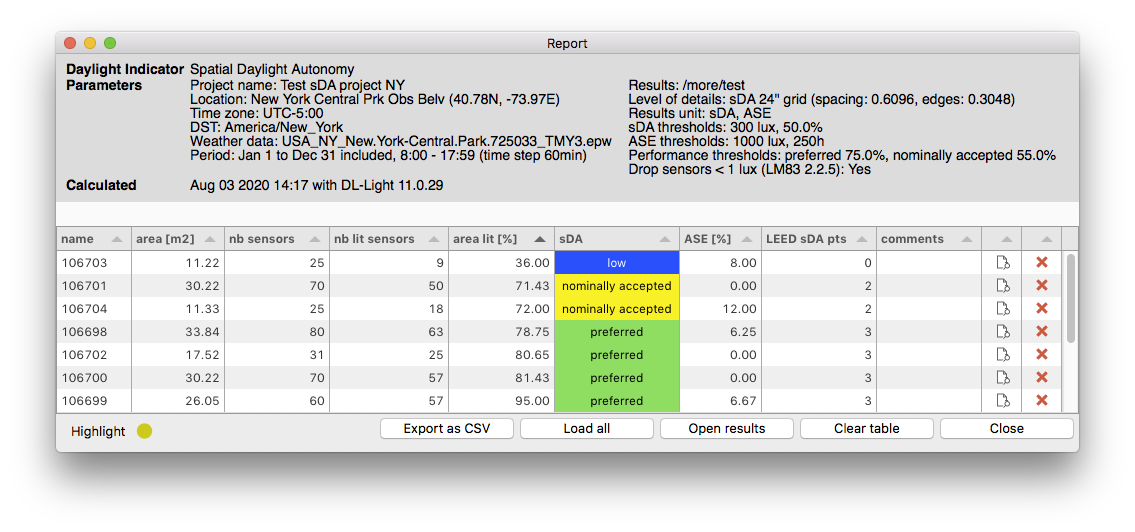
Presentation of the report for sDA area analysis:
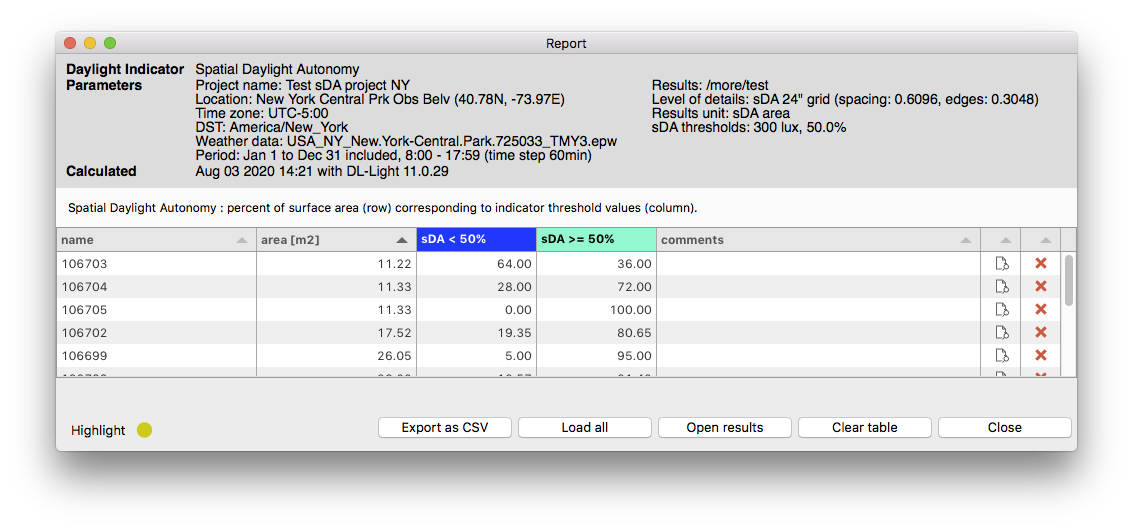
Presentation of the report for sDA duration analysis:
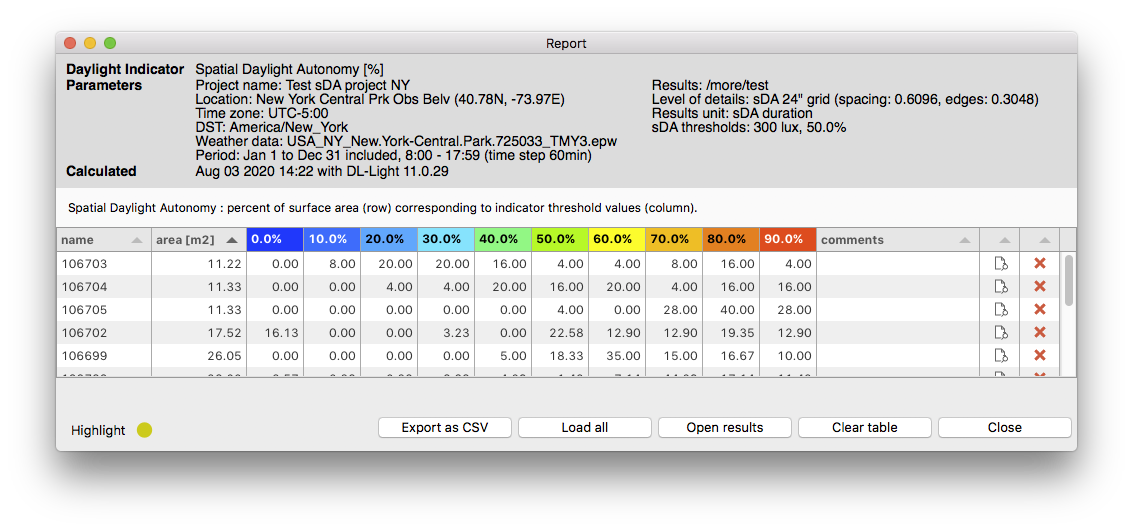
Show/Hide Sensors and Values
![]() explores results directly in the model for each sensor.
explores results directly in the model for each sensor.

For further calculations on the same model:
 .
.
DL-Light uses a calculation cache algorithm. It automatically detects if a surface requires recalculation or if a previous result can be reused. By default, the cache keeps the information of the last 10 calculations (value configurable in the preferences).
Archiving results:
DL-Light allows to archive all the results of a calculation: reports, textures and calculation steps (exported Radiance model, weather file, ...). This archive can be reloaded on the model, providing it is exactly the same model as during the calculation.
See the page Archiving results for more informations about this feature.
Comparison of results
The comparison of two archives is displayed in a special report:
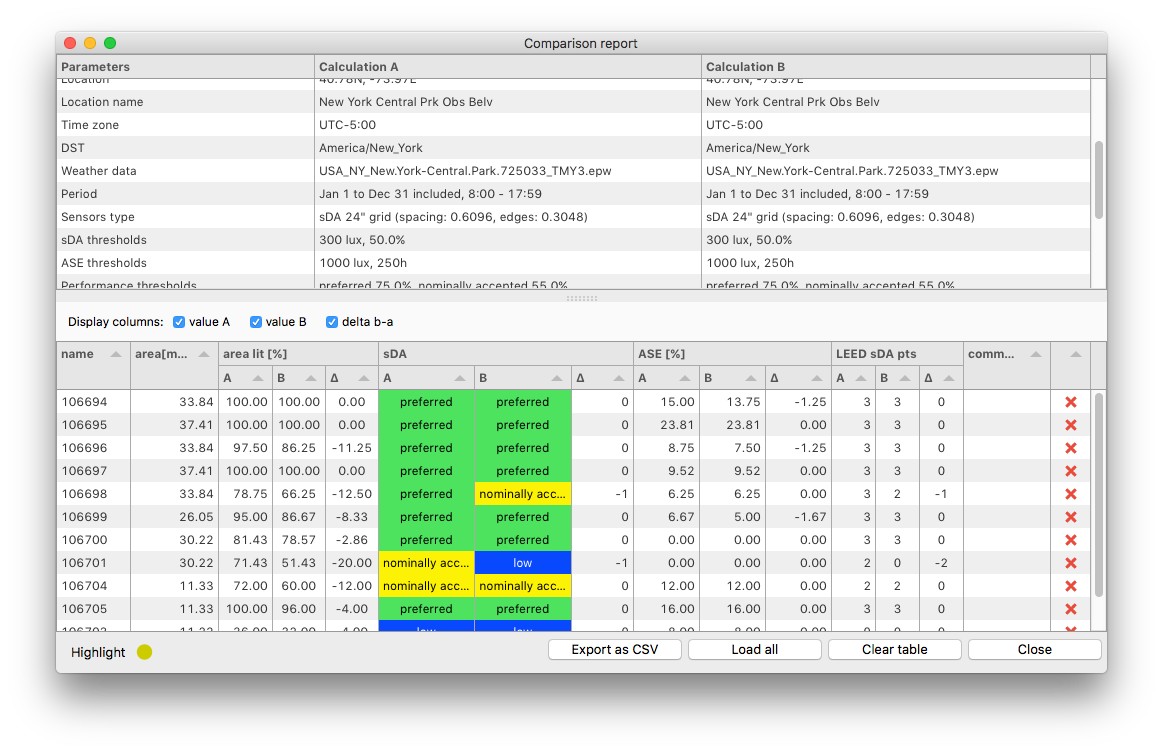
See the page Comparison of results for more information about the comparison of archives.
Snapshots:
Current SketchUp model view with imported results can be exported with
palette
 or without palette
or without palette
 to png format. To explore created images user can open folder where
they are saved
to png format. To explore created images user can open folder where
they are saved
 .
.
This option is not supported in trial version of the extension (see
license information).
